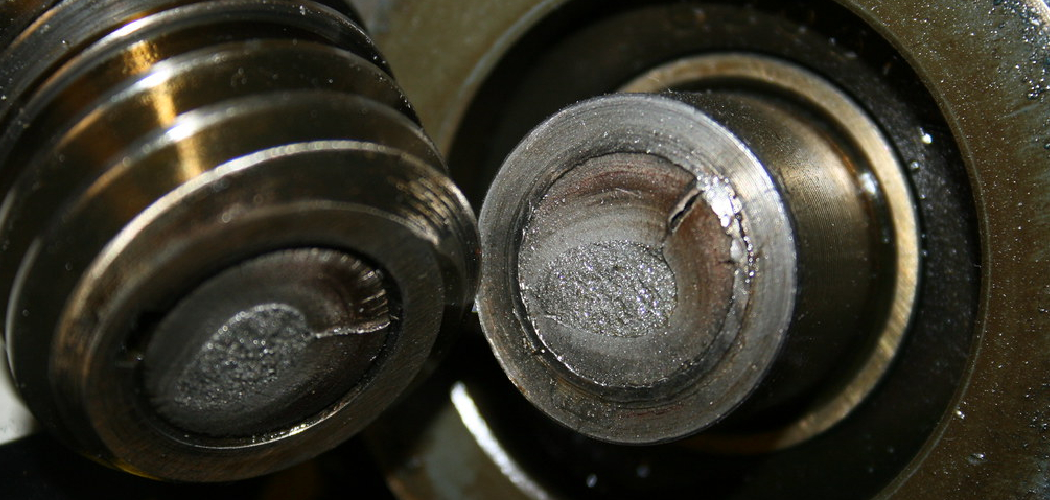The drive shaft is a crucial component of a vehicle’s drivetrain, responsible for transferring power from the transmission to the wheels. Recognizing the signs of a failing drive shaft is essential to prevent further damage to the drivetrain and ensure safe operation. When a drive shaft begins to deteriorate, it manifests in various symptoms that, if left unaddressed, can lead to significant mechanical issues and compromise driving safety.
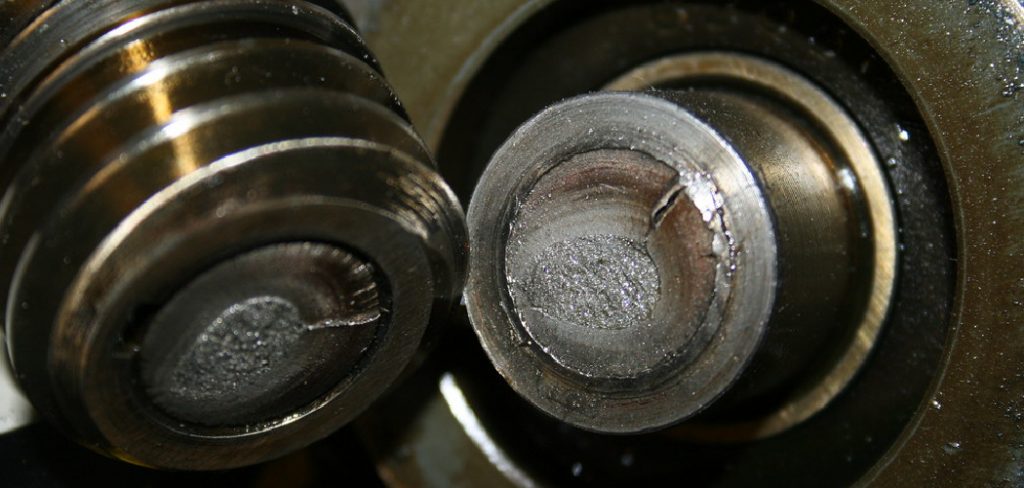
In this article, we explore how to know if your drive shaft is bad, offering drivers valuable insights into potential problems such as vibrations, unusual noises, or difficulty steering. By understanding these symptoms, individuals can promptly address drive shaft issues, preventing extensive damage and maintaining the overall health and performance of their vehicles.
The Drive Shaft’s Role in The Vehicle’s Drivetrain System
The drive shaft’s purpose within the vehicle’s drivetrain system cannot be overstated. It serves as a critical connector, linking the transmission, which generates the power, to the differential, which distributes that power to the wheels. The rotation of the drive shaft is what propels the wheels to turn and the vehicle to move.
This integral cylindrical rod must remain sturdy, balanced, and properly aligned to effectively transmit torque and engine rotation at high speeds. Its seamless operation is key to the smooth performance and drivability of the vehicle, emphasizing the importance of timely recognition and resolution of any drive shaft issues.
Recognizing Signs of a Bad Drive Shaft
Identifying issues with the drive shaft early on is paramount to vehicular safety and efficiency. A compromised drive shaft can lead to performance issues that may endanger the driver and passengers. Common signs include vibrations under the vehicle, strange noises like clunks or scrapes when the vehicle is moving or turning, and difficulty with steering which could point to a drive shaft that is failing and needs attention.
By recognizing these symptoms promptly, one can avoid the risk of drive shaft failure which may result in the vehicle becoming inoperable. Early diagnosis and intervention can save drivers from costly repairs and ensure that their vehicle continues to operate smoothly and safely.
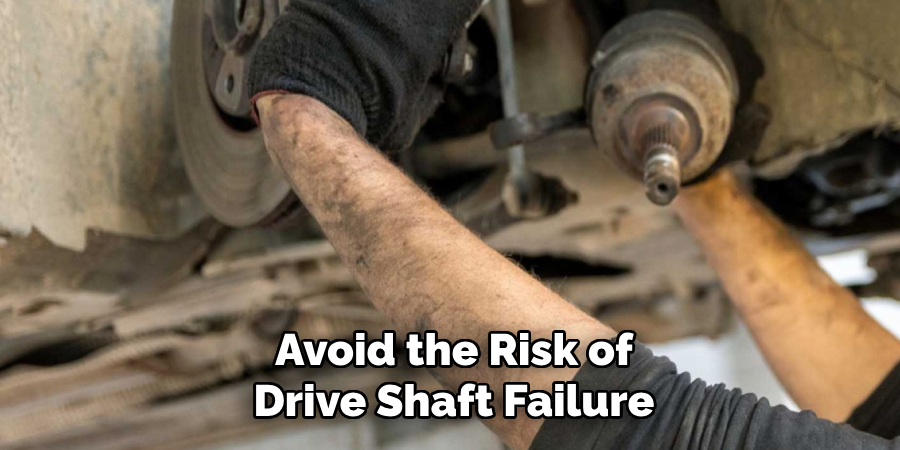
Potential Consequences of Driving with a Faulty Drive Shaft
Ignorance of a defective drive shaft can have dangerous repercussions, potentially leading to a vehicle breakdown at inopportune moments and presenting serious safety hazards on the road. Primarily, an impaired drive shaft may abruptly disengage, causing a sudden loss of power transmission and leaving the vehicle inoperative.
This could occur while driving, significantly increasing the risk of accidents. Additionally, prolonged driving with a compromised drive shaft can amplify wear and tear on other drivetrain components, including differentials and transmissions, leading to more extensive and expensive repairs.
It is crucial for vehicle owners to heed the warning signs of drive shaft failure and seek immediate mechanical assessment to ensure their safety and the longevity of their vehicle’s integral systems.
Understanding the Drive Shaft
A drive shaft is typically a long, hollow tube made from steel or aluminum, engineered to leverage its torsional strength while minimizing the rotational mass. Inside, it is intricately constructed with universal joints (U-joints) or constant velocity (CV) joints that allow it to transmit torque effectively at varied angles, which are essential for maintaining the connection as the vehicle moves over bumps and dips in the road.
Some vehicles, particularly all-wheel or four-wheel drives, have multiple drive shafts to accommodate their complex drivetrain layouts. Maintaining the drive shaft involves periodic inspections for signs of wear, lubrication of the joints, and ensuring that the shaft is free from severe dents or warping that can unbalance the system. An understanding of this component’s mechanics helps in recognizing when it needs service or replacement.
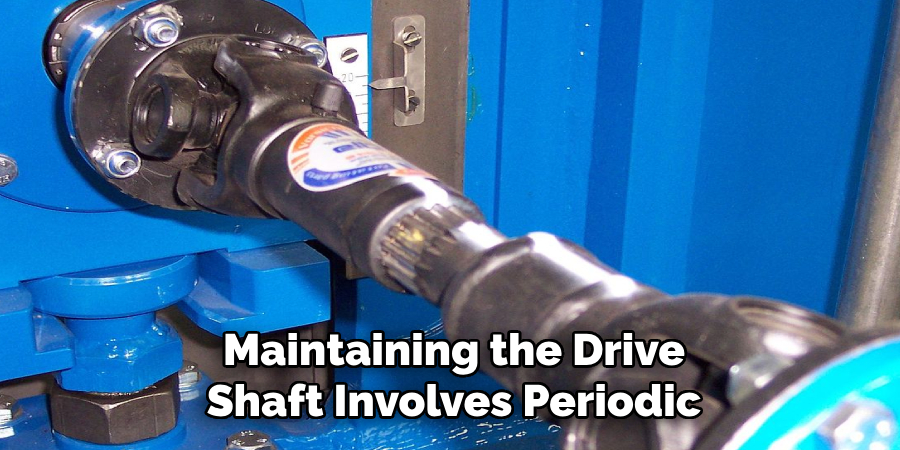
Symptoms of a Bad Drive Shaft
Detecting early symptoms of drive shaft failure is imperative for maintaining your vehicle’s performance and safety. Some of the most common symptoms include:
- Vibrations from Under the Vehicle: One of the first signs of a bad drive shaft is often an unusual vibration that comes from underneath the vehicle. It may start off faintly and become more pronounced over time. These vibrations indicate that the drive shaft may be damaged or the universal joints are worn out.
- Unusual Noises When Driving: Listen for clunking, scraping, or rattling sounds when driving. These noises may be an indication of a damaged U-joint or CV joint, indicating that the drive shaft needs attention.
- Difficulty Steering: A failing drive shaft can also cause difficulty in steering. If you notice increased resistance, shaking, or pulling to one side while turning, this could mean that the drive shaft is on the verge of failure.
- Uneven Tire Wear: A compromised drive shaft can lead to uneven tire wear, causing tires to wear out faster on one side than the other. This is often due to an imbalance in torque distribution caused by a damaged or misaligned drive shaft.
10 Methods How to Know if Your Drive Shaft Is Bad
1. Vibrations and Shuddering:
One of the most common indicators of a failing drive shaft is the presence of vibrations or shuddering sensations while driving. If the drive shaft is imbalanced, misaligned, or has worn-out components, it can lead to noticeable vibrations, especially during acceleration or at specific speeds. In some cases, the shuddering may be felt even when the vehicle is not moving, which can be a sign of worn-out bearings or u-joints.
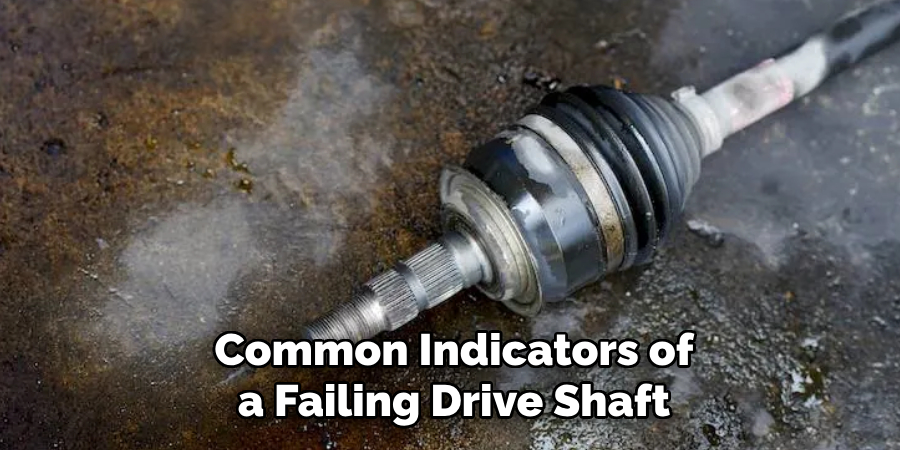
There are several reasons why vibrations and shuddering occur in a drive shaft. As mentioned earlier, an imbalanced or misaligned drive shaft can cause vibrations due to uneven weight distribution. Additionally, worn-out components such as u-joints, center support bearing, or bushings can also contribute to this problem. In some cases, a damaged drive shaft itself can cause vibrations and shuddering.
If you experience vibrations or shuddering while driving, it is essential to get your vehicle checked by a mechanic as soon as possible. Ignoring these symptoms can lead to further damage to the drive shaft and other components, resulting in costly repairs. Additionally, it can also affect the drivability of your vehicle and pose a safety risk.
2. Unusual Noises:
Pay attention to any unusual noises emanating from the vehicle, as these can be early warning signs of drive shaft issues. Clunking, squeaking, or knocking sounds, particularly when shifting gears or during sharp turns, may indicate worn U-joints, a failing center support bearing, or other drive shaft-related problems.
In addition to these warning signs, you may also notice excessive vibrations or rumbling sounds while driving. Though these noises may not always indicate a drive shaft issue, it’s important to have them checked by a mechanic as soon as possible to prevent further damage and potential safety hazards.
While drive shaft repairs can be costly, ignoring these warning signs and continuing to drive with a damaged or failing drive shaft can lead to even more expensive repairs down the road.
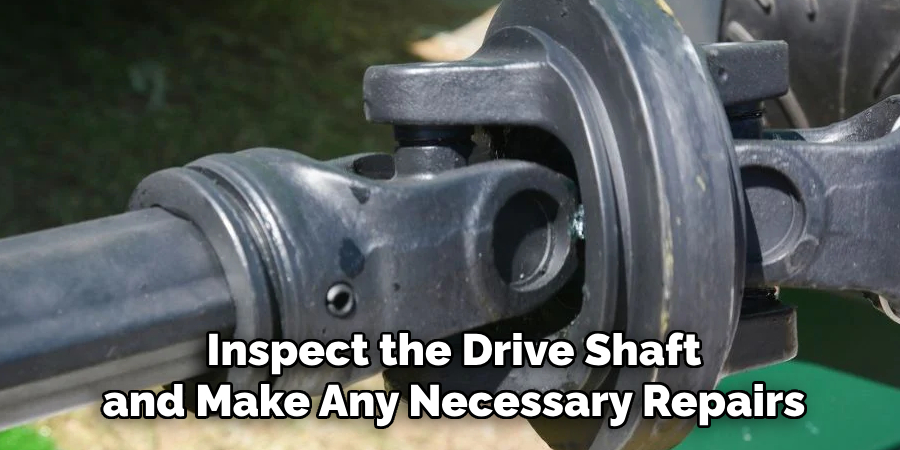
In addition to unusual noises, you should also pay attention to any changes in handling or steering. A damaged or unbalanced drive shaft can cause vibrations that affect the overall performance of your vehicle.
This can not only be uncomfortable for passengers, but it can also make it more difficult to control the vehicle and increase the risk of accidents. If you notice any changes in how your vehicle handles or steers, it’s important to have a mechanic inspect the drive shaft and make any necessary repairs.
3. Difficulty Steering:
A deteriorating drive shaft can affect the steering responsiveness of a vehicle. If you experience difficulty steering or notice increased resistance while turning, it could be indicative of a failing drive shaft. This symptom often arises when U-joints or other components exhibit excessive wear. In addition, a faulty drive shaft can cause vibrations or shaking in the steering wheel, especially at higher speeds.
There are several factors that can contribute to difficulty steering caused by a failing drive shaft. One common cause is lack of lubrication on U-joints. These joints require proper lubrication to function smoothly and efficiently.
Without proper lubrication, friction between the moving parts can cause increased resistance when steering. In addition, worn or damaged U-joints can also contribute to difficulty steering as they are responsible for transferring power from the transmission to the wheels.
4. Visible Damage or Imbalance:
Perform a visual inspection of the drive shaft for any visible signs of damage, such as dents, bends, or missing balance weights. Visible imbalances or irregularities in the drive shaft’s appearance may suggest issues that could compromise its functionality. If any damage or imbalance is noticed, the drive shaft should be replaced immediately to avoid potential equipment failure.
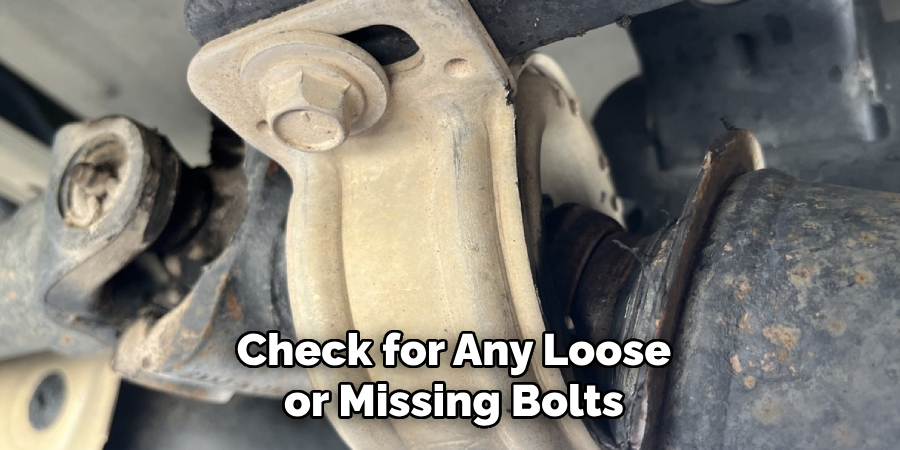
Additionally, check for any loose or missing bolts and tighten them if necessary. These bolts play a crucial role in keeping the drive shaft securely attached to other components of the vehicle and ensuring its proper function.
5. Abnormal Drivetrain Sounds:
A failing drive shaft can produce abnormal sounds within the drivetrain. Listen for clanking or thudding noises, particularly when shifting between drive and reverse or during sudden acceleration and deceleration. These sounds may indicate play or movement within the drive shaft components. Additionally, a failed u-joint may produce metallic clicking or squeaking noises when the vehicle is in motion.
Drive shaft issues can also cause vibrations while driving. If you notice excessive vibration, particularly at high speeds, it could be a sign of a damaged drive shaft. A bent or unbalanced driveshaft can create irregular movements that lead to vibrations.
In some cases, drivetrain issues may stem from problems with the differential. If you hear a loud whining or grinding sound coming from the rear of your vehicle, it could be an indication of differential failure. This component is responsible for transferring power from the engine to the wheels, so any issue with it can greatly affect the performance of your vehicle.
6. Intermittent Vibration Under Load:
If vibrations are noticeable only under certain conditions, such as during acceleration or when climbing a hill, it could signal a problem with the drive shaft. Intermittent vibrations under load may be indicative of imbalances or misalignments that become more pronounced during specific driving scenarios. This could be caused by worn or damaged universal joints, faulty drive shaft angles, or worn center support bearings.
One possible solution to this issue is to have the drive shaft balanced. During this process, a mechanic will spin the drive shaft and add small weights to counteract any imbalances. This should help reduce vibrations under load and improve overall driving performance.
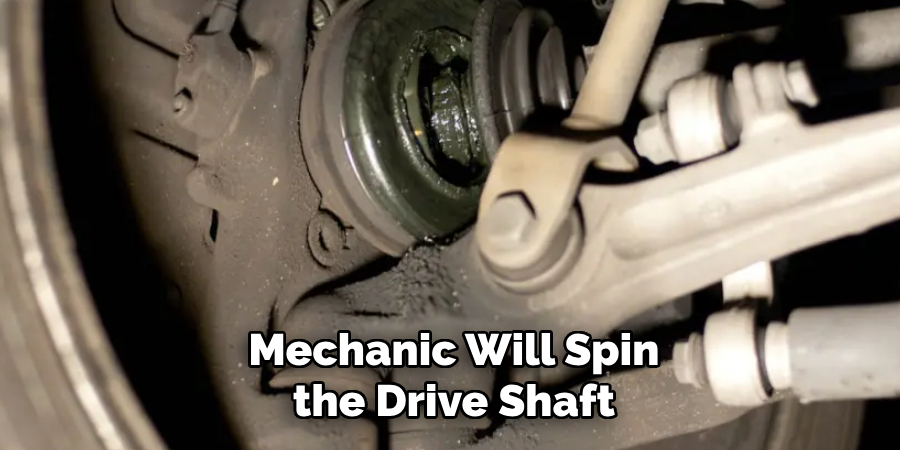
Another potential cause of intermittent vibrations under load is a faulty center support bearing. This component supports the middle of the drive shaft and can wear out over time, causing vibrations. If this is the case, replacing the center support bearing should alleviate the issue.
7. Visible Wear on U-Joints:
Inspect the universal joints (U-joints) for visible signs of wear, such as rust, lack of lubrication, or play in the joint. Worn-out U-joints can lead to excessive movement within the drive shaft, causing vibrations and compromising its overall integrity. Regularly greasing the U-joints can help prevent wear and tear, as well as reduce friction between moving parts.
When inspecting the U-joints, it is also important to check for any cracks or damage to the yoke or crosspiece. These are critical components of the joint and any damage can significantly affect its performance.
If any visible wear or damage is found, it is recommended to replace the entire U-joint assembly rather than attempting to repair it. This will ensure proper functioning and prevent any potential failure while driving.
8. Fluid Leaks from the Transmission or Differential:
A failing drive shaft can lead to fluid leaks from the transmission or differential. Inspect the area around these components for any signs of leaking fluid.
A damaged or worn-out drive shaft seal may allow transmission or differential fluid to escape, indicating a potential issue. Additionally, a damaged drive shaft can cause the transmission or differential to work harder, putting additional stress on these components and potentially leading to fluid leaks.
While it may seem insignificant, even small fluid leaks can quickly turn into bigger problems if left unchecked. The leaking fluid can damage surrounding components and lead to increased wear and tear on the transmission or differential. It’s important to address any fluid leaks as soon as they are noticed to prevent further damage and potential breakdowns.
9. Steering Wheel Misalignment:
An imbalanced or misaligned drive shaft can impact the alignment of the steering wheel. If you notice that the steering wheel is off-center when driving straight, it may be a result of drive shaft-related issues affecting the alignment of the entire drivetrain. This can also be caused by worn out suspension components or a damaged steering column.
In order to fix this issue, it is important to address the root cause which could be any of the aforementioned factors. A mechanic will check for any damage or wear and tear in the drive shaft, suspension components, and steering column. If necessary, they may replace these parts to restore proper alignment.
10. Vehicle Drift or Pulling:
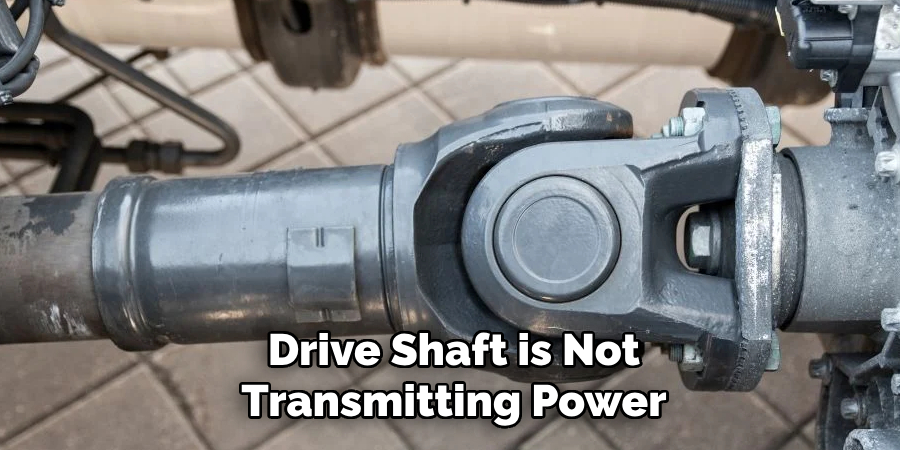
A bad drive shaft can contribute to a sensation of the vehicle drifting or pulling to one side. This symptom may occur when the drive shaft is not transmitting power evenly to the wheels, leading to an imbalance in the drivetrain and affecting the vehicle’s overall stability. This can also happen if there is excessive play or looseness in the joints of the drive shaft, causing it to wobble and disrupt the smooth rotation of the wheels.
There are a few common causes for this issue, including worn out universal joints (U-joints), dirt and debris buildup on the driveshaft, and misalignment between the engine and rear axle. In some cases, a damaged or bent drive shaft can also be the culprit.
To prevent this problem, it is important to regularly inspect and maintain the drive shaft. This includes checking for any signs of wear or damage on the U-joints, keeping the driveshaft clean from debris, and ensuring proper alignment between the engine and rear axle.
Conclusion
In conclusion, recognizing the signs of a bad drive shaft is crucial for maintaining the overall health and performance of your vehicle. As we’ve explored, symptoms such as vibrations, clunking noises, and difficulty steering are clear indicators that your drive shaft may be compromised.
Regular inspection and timely maintenance are essential to prevent further damage and potential safety hazards. Ignoring these warning signs can lead to more extensive and costly repairs, underscoring the importance of proactive vehicle care.
Whether you’re a seasoned car enthusiast or a casual driver, understanding the nuances of your vehicle’s components empowers you to address issues promptly. Hopefully, this article gave you some helpful tips about how to know if your drive shaft is bad successfully, so now that you have the proper knowledge on how to get the job done, why not give it a try today?

